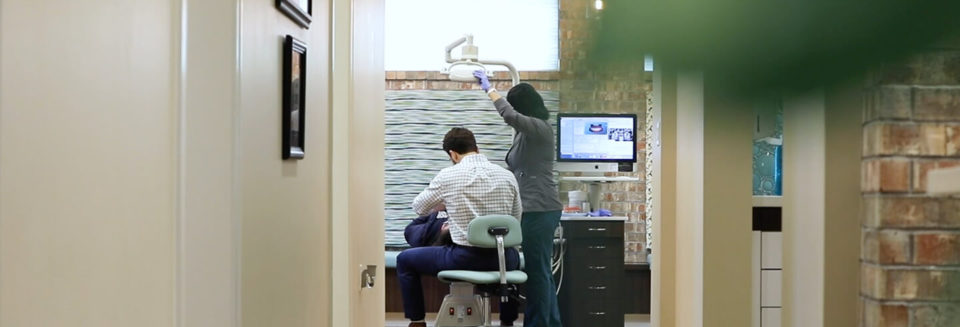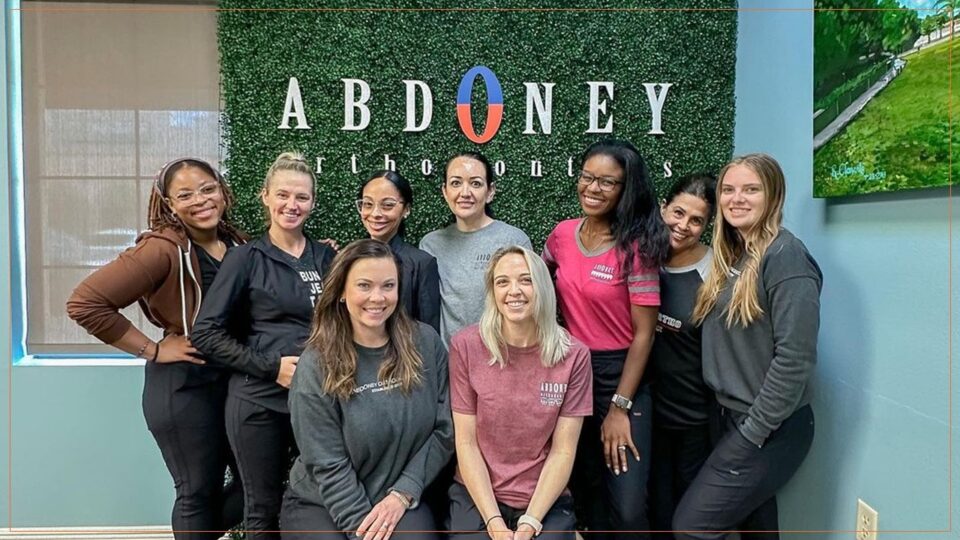Be prepared for changes coming to the Orthodontics section of the CDT Code beginning January 1, 2022.
The American Association of Orthodontists is excited to announce that the Code Maintenance Committee of the American Dental Association, the body responsible for evaluating and voting on proposed changes to the Code on Dental Procedures and Nomenclature (CDT Code), approved all three of the AAO’s Code Action Requests at its meeting this past March. These changes will be reflected in CDT 2022, which will be effective for services provided on or after January 1, 2022.
The AAO’s approved requests were:
- Delete the Interceptive Orthodontic Treatment subcategory nomenclature, descriptor, and codes D8050 and D8060
- Revise the Limited Orthodontic Treatment descriptor
- Delete D8690 “orthodontic treatment (alternative billing to a contract fee)”
How this will impact AAO Members?
In the fall of 2020, the Council on Orthodontic Health Care (COHC), the AAO’s council responsible for studying and making recommendations on all matters concerning third party reimbursement plans, polled AAO Members to gauge whether the then current CDT Code was meeting orthodontists’ needs. Respondents to that survey selected “Determining when a case is Limited vs. Interceptive” (21.2%) and “Determining when a case is Limited vs. Comprehensive” (14.8%) as two of their “top three areas of concern with the code.”
Because of the approved changes, beginning in 2022 the Interceptive Orthodontic Treatment codes will cease to exist and the descriptor of Limited Orthodontic Treatment will be revised. This should help eliminate ambiguity and redundancy, as the procedures previously described as “interceptive” were thought to be substantively similar clinically to the Limited Orthodontic Treatment procedures.
The new language for Limited Orthodontic Treatment will be as follows:
Limited Orthodontic Treatment
Orthodontic treatment utilizing any therapeutic modality with a limited objective or scale of treatment. Treatment may occur in any stage of dental development or dentition.
The objective may be limited by:
- not involving the entire dentition.
- not attempting to address the full scope of the existing or developing orthodontic problem.
- mitigating an aspect of a greater malocclusion (i.e., crossbite, overjet, overbite, arch length, anterior alignment, one phase of multi-phase treatment, treatment prior to the permanent dentition, etc.).
- a decision to defer or forego comprehensive treatment.
D8010 limited orthodontic treatment of the primary dentition
D8020 limited orthodontic treatment of the transitional dentition
D8030 limited orthodontic treatment of the adolescent dentition
D8040 limited orthodontic treatment of the adult dentition
The deletion of D8690 should also help reduce confusion for AAO Members. The Code Maintenance Committee expressed its agreement with the COHC/AAO position that D8690 does not truly represent a procedure, is redundant with other existing codes, and is no longer required.
As a reminder, these changes will not take effect until January 1, 2022. However, because the new code set will most certainly impact your coding and billing practices, the AAO wanted to make you aware of them now to help you and your staff prepare.
Interested in Coding and Billing Resources from the AAO?
Additional information regarding the CDT Code, billing, and related issues can be found on the Insurance Claims page on the AAO Member Website. You and your staff can also take advantage of training on this topic and others by visiting the AAO’s Continuing Education page.
Have Suggestions or Concerns Regarding the CDT?
If you have suggestions or concerns regarding the CDT Code that you would like COHC to consider for future Code Action Requests, click here to submit your thoughts to the Dental Benefits Comment Box.
13 Comments
Comments are closed.




I don’t feel like this is in our memberships best interest. You are taking away the coast that we have better reimbursements on and keeping the one we get paid less on. This makes me wonder if the AAO cares about the insurance companies more than the people paying their bills. I think before a change like this is made, You need to talk to your members or at least explain the reasoning. Otherwise, I fear people will not see the need to be a member. The AAO is supposed to be “our voice”. Our profession needs a strong voice to help us to differentiate ourselves to the public from internet companies and dentists that claim “orthodontics”. We also need a strong voice when speaking to and negotiating with insurance companies. This needs to be looked at again BEFORE this goes into affect or is it too late?
Hello Shannon, thank you for your feedback and inquiry regarding the upcoming changes to the CDT code. I am a member and Chair of the Council on Orthodontic Healthcare (COHC) and our group surveyed AAO members and found that there was much confusion on when to code limited vs interceptive. We agree there is ambiguity and our Dental Benefits Advisory Service often gets calls from members on when to use what code and why. As a Council, we study and survey all of this member data and we decided it was time to make the code more simple and easy to use.
Here is the reasoning behind the change:
– The code change:
simplifies coding decisions
makes coding more consistent universally
make claims processing turnaround faster
– The average and range of Interceptive/Limited fees are similar (may depend on
negotiated network rates)
– Some Insurance companies accept a higher fee for Interceptive, some for Limited
– Contracted fees will likely change to accommodate the merged coding protocol
Most importantly, I think it is important to know that our Council sends two members each year to the meeting of the insurance industry, the NADP (National Association of Dental Plans) and we advocate on AAO members behalf. We are in communication the NADP with this upcoming change and will provide your voice and feedback to the NADP as well. An important side note: The ADA is who governs the CDT Code manual, you should know the ADA Code Maintenance Committee is working on a major overhaul of the CDT guide. A MAJOR change is coming on the horizon and we are trying to simplify our section now so the change is easier in the future. A final thought, please review the AAO CDT At a Glance guide and review the guidance on Comprehensive codes. You might find that some of your treatments you were coding for Interceptive might fall under a Comprehensive category. Please do not hesitate to contact me at my office or here on this forum if you have any additional questions. Thank you again for your feedback, I promise we are doing our best to work on the behalf of all AAO members.
John,
The following statement above is simply inaccurate:
“The average and range of Interceptive/Limited fees are similar (may depend on
negotiated network rates).”
Almost every PPO insurance plan (that I am contracted with) has a significantly less allowable fee for the limited codes compared to the interceptive codes. Some are several hundred dollars less. Others are over $1,000 less. Maybe only one or two plans have “similar fees”. Two PPO plans (Aetna and Dentemax) have fees in the $375 to $575 range for the limited codes!
We have always submitted Phase I under D8060 (interceptive transitional) that you are deleting.
What about the CDT code D8070 (comprehensive treatment of the transitional dentition)? Should we have been using that code for Phase I or do we need to use that code moving forward? When I am describing Phase I in my practice, it usually involves a RPE, U/L 2×4, and retention with upper Hawley and LLHA. In addition, the case could also involve a reverse facemark, tandem appliance or habit appliance.
If we are supposed to use CDT code D8020 (limited transitional) for Phase I, then we simply cannot afford to treat these patients unless we are willing to basically treat them “pro bono.”
Though I am very conservative when it comes to Phase I in my practice, there are patients that truly benefit from early treatment – anterior or posterior crossbites, finger habits with anterior openbite, underbites, etc. We shouldn’t have to treat these patients for free or for a loss of income.
If CDT code D8070 (comprehensive transitional) and D8080 (comprehensive adolescent) are both referring to comprehensive adolescent treatment, then why do we have both?
Would you care to elaborate on this?
Thanks,
Andy
Thank you for your comment, Dr. Baxter. I have responded to you via email. If your email address is different than the one on file with the AAO, or you otherwise did not receive that message, please contact my direct line at (314) 292-6570.
This is the same issue I am having. Can you please assist Andrew as to the codes to use now?
For orthodontic treatment, you will continue to use either a Limited code or Comprehensive code, whichever is more appropriate based on the patient’s treatment plan and the definitions provided in the CDT. The Limited Definition found in CDT 2022 is provided in full in the article above. The full CDT is already available through the ADA. The AAO’s 2022 At-A-Glance Guide, which contains the codes most often used by orthodontists, will be distributed to AAO Members in the near future.
The fee issues mentioned above relate specifically to particular contractual arrangements with insurance plans. Negotiated rates vary by insurer, location, plan, contract, etc., and therefore should be reviewed by the practice on an individual basis. If you have not yet received any fee schedule information from the insurers whose networks you participate in, I would suggest contacting their provider relations teams.
Blue Shield of Northeastern NY is telling us that D8090 is also no longer going to be in use. Is this correct?
That is incorrect. D8090 remains in CDT 2022. However, D8690 was removed, so perhaps that communication included a typo. Pease note that the presence of a code in the CDT does not mean that the procedure is covered or reimbursed by a dental benefits plan. The communication you received may have been alerting your practice that that plan will no longer cover D8090.
I have read the responses to the changes in the CDT codes from D8060 to D8020. My office has never had an issue/confusion as to what codes to select when treatment is provided for Phase I treatment. I am in agreement with Dr. Baxter’s 10-24-21 comments that using code D8020 for Phase I will greatly impact the reimbursement rate: it is significantly lower. We annually reach out to our Provider Relations departments of our contracted insurance companies to review our rates. We have not only been denied an increase, but getting provider relations to respond is difficult. You must leave a message, and they have a 30-day window to respond. Most of the time it requires multiple calls for a response. Many insurance companies do not allow a request for increase as they review internally and decide if an increase is warranted. Please help us understand how this change is a helping our practice.
We also never had a problem selecting the correct code but will be limited in our ability to provide appropriate care to children in a phase I treatment given the reduced rates of reimbursement for D8020.
I agree 100% Was any thought put into what would be in the best interest of AAO members? Especially during COVID when it is so hard to get Provider relations to respond. I am glad my significant AAO dues are being used against my interests.
Beth, my office also has experienced the same thing you have in the past. It seems like the AAO is in bed with the insurance companies and their interests rather than their members interests. It becomes quite easy for the AAO to say re-evaluate whether to be in-network or not and if it is still financially feasible when every patient walking in the door or calling asks, “Are you in our network?” I also agree with Jeffrey that providing the appropriate care to children in need of Phase I treatment will be limited based on the rate of reimbursement by the insured’s insurance plan and reimbursement. It is as if the AAO is forcing those of us who want to remain independent to become part of a “socialized dental” system.
Do we now have to deal with censorship within our own organization — one we pay annual dues to belong to? Isn’t it enough with the censorship in the news and the internet and social media?